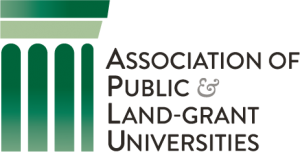History
![]() Nearly a decade ago, the Bill and Melinda Gates Foundation (BMGF) made a commitment to helping low-income and first-generation college students achieve postsecondary success. Their aim is to remove barriers that contribute to the education gap including college readiness, affordability, and flexibility in terms of location and schedule. In 2014, The Foundation invested $20 million in a program they called The Next Generation Courseware Challenge. Educational technology companies selected for the challenge designed adaptive courseware that could be scaled for high-enrollment classes. The courseware is designed to solve two problems in higher education: personalizing the learning experience for students in high-enrollment classes and scaling the personalized learning experience so that it can be available to thousands of students at the same time. Research in the early stages of adaptive courseware adoption by community colleges, technical colleges, and traditional universities indicated that adaptive courseware used in blended courses (some online and some face-to-face time) increased student success. More research needs to be done, but the courseware’s potential to make postsecondary education more accessible to at-risk students convinced the Gates Foundation to move forward with it.
Nearly a decade ago, the Bill and Melinda Gates Foundation (BMGF) made a commitment to helping low-income and first-generation college students achieve postsecondary success. Their aim is to remove barriers that contribute to the education gap including college readiness, affordability, and flexibility in terms of location and schedule. In 2014, The Foundation invested $20 million in a program they called The Next Generation Courseware Challenge. Educational technology companies selected for the challenge designed adaptive courseware that could be scaled for high-enrollment classes. The courseware is designed to solve two problems in higher education: personalizing the learning experience for students in high-enrollment classes and scaling the personalized learning experience so that it can be available to thousands of students at the same time. Research in the early stages of adaptive courseware adoption by community colleges, technical colleges, and traditional universities indicated that adaptive courseware used in blended courses (some online and some face-to-face time) increased student success. More research needs to be done, but the courseware’s potential to make postsecondary education more accessible to at-risk students convinced the Gates Foundation to move forward with it.
The Foundation worked with the Association of Public Land Grant Universities (APLU) to select eight universities to adopt the courseware in general education courses  with high drop, withdrawal, and failure rates. In the summer of 2016, the University of Mississippi was one of the universities chosen for the grant.
with high drop, withdrawal, and failure rates. In the summer of 2016, the University of Mississippi was one of the universities chosen for the grant.
Mission
To support faculty implementing personalized learning in their classes.
Goals
- To support student success, particularly among first-generation and low-income students, through the implementation of personalized learning strategies.
- To research and promote innovations that support faculty teaching excellence.
- To work with UM faculty support partners including the Center for Excellence in Teaching & Learning, the Faculty Technology Development Center, the Office of Academic Innovation, and the Office of the Provost.
- To build relationships with institutional partners with a shared commitment to innovation, access, and equity in higher education.